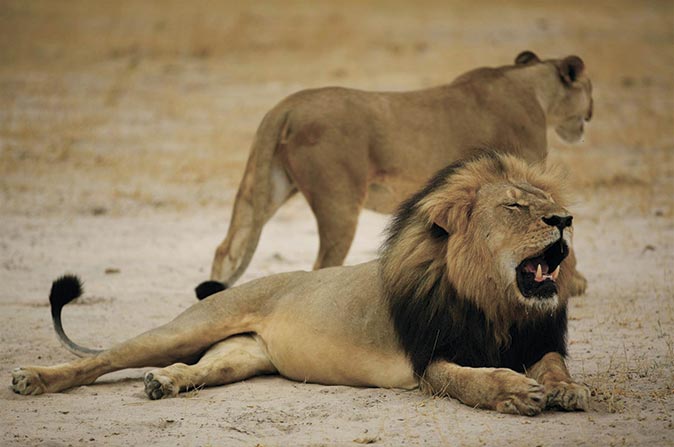Tourism / Zimbabwe
Luxury to be found in depths of the wilderness
Find the big five in Zimbabwe’s ten national parks

A lion in Hwange.
Watering holes packed with leopards, hyenas and buffalo; powerful rivers, floodplains and leafless woodlands. Until recently, this was the natural habit of Cecil the Lion before he was gruesomely killed by poachers.
Cecil the Lion primarily lived in Hwange National Park, one of ten national parks, where the Big Five roam free. Zimbabwe’s largest park, Hwange occupies around 14,500 square kilometres and is home to some of the nation’s 80,000 elephants. Poaching is a constant problem. However, increasing tourism revenues help the national parks to reinvest in the preservation of Zimbabwe’s rich wildlife.
While Hwange is best known with safari-goers, Zimbabwe has a secret to offer the safari connoisseur: The Mana Pools National Park. A World Heritage Site, it is on the banks of the Zambezi river where dramatic cliffs overhang the water’s edge. Its floodplains are home to an array of wild animals, including elephants, buffalo, leopards and cheetahs. In the river’s deeper sections a large number of hippopotamus and Nile crocodile hide. The Chikwenya Safari Lodge, a 12,000-acre plot of private land with eight separate lodges at around $455 a night offers a truly luxurious and a tailor-made safari experience.
Another spectacular safari destination is the Matobo Hills National Park that features uninterrupted views of a landscape teeming with wildlife. For a unique experience, visitors can sometimes come face-to-face with an elephant or see big game grazing upon leaving their rooms at Matabo Hills Lodge, whose prices start at around $120 per night. The park is also home to one of the largest concentrations of black and white rhinoceros, making it easy to see this endangered species up close.
